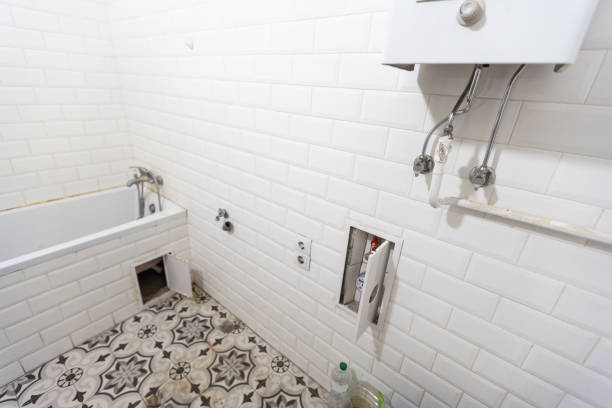Maintaining clean bathroom tiles can be challenging, especially in areas frequently exposed to water and soap. Stains, soap scum, and mildew can quickly build up, dulling the appearance of your once-sparkling tiles. However, using the right shower tile and grout cleaner, coupled with effective cleaning techniques, can make a significant difference. This blog post delves into the best methods for removing stains from bathroom tiles, ensuring they remain as pristine as they were on day one.
Understanding the Common Types of Stains on Bathroom Tiles
Before diving into cleaning methods, it’s crucial to understand the types of stains that typically affect bathroom tiles:
- Soap Scum: Resulting from soap and mineral deposits from water, these are the most common and can be quite stubborn without regular cleaning.
- Mildew and Mold: These fungi thrive in moist environments and can appear as black or green spots, posing health risks if not addressed.
- Hard Water Stains: These are mineral deposits left by hard water, often appearing as white or lime-green spots.
Daily Cleaning: The First Line of Defense
To prevent stains from becoming permanent, daily cleaning is essential. A simple routine using a shower tile and grout cleaner can keep most stains at bay:
- Wipe Down Surfaces Regularly: After use, quickly wiping down tiles with a squeegee or soft cloth can prevent water spots and soap scum buildup.
- Ventilation: Proper ventilation helps reduce moisture levels in the bathroom, slowing down the growth of mold and mildew.
Targeted Cleaning Techniques for Tough Stains
For more stubborn stains, specific techniques and solutions are necessary:
- Baking Soda Paste: A gentle abrasive, baking soda can be made into a paste and applied to both tiles and grout to lift tough stains.
- Vinegar Solution: For organic stains like mildew, a vinegar solution can help break down the growth without damaging the tiles or grout.
- Hydrogen Peroxide: This is effective for deeper mold stains, especially when combined with baking soda.
Choosing the Right Shower Tile and Grout Cleaner
Selecting an appropriate cleaner is crucial for maintaining the integrity and appearance of your bathroom tiles. The best shower tile and grout cleaner should:
- Be Formulated for Bathroom Use: Ensure the cleaner is specifically designed for bathroom tiles and grout to handle common bathroom stains effectively.
- Be Safe for Regular Use: Choose non-abrasive cleaners that won’t damage your tiles or grout with frequent use.
- Address Mold and Mildew: Look for cleaners that not only clean but also prevent the growth of mold and mildew.
Professional Cleaning for Persistent Stains
If DIY methods and regular cleaners fail to remove the toughest stains, it might be time to call in the professionals from www.metlahousecleaningsandiego.com. They have specialized equipment and stronger cleaners that can handle severe discolorations without damaging your tiles.
Preventative Measures for Long-Term Maintenance
Keeping your bathroom tiles stain-free isn’t just about cleaning; it’s also about prevention:
- Regular Sealing of Grout: This can prevent moisture and staining agents from penetrating the porous grout material.
- Using Water Softeners: In areas with hard water, using a water softener can prevent mineral buildup from the start.
- Routine Deep Cleaning: Schedule periodic deep cleans to tackle areas that regular cleaning might miss.
Conclusion
Keeping bathroom tiles spotless doesn’t have to be daunting. By using the right techniques and high-quality shower tile and grout cleaners, you can easily tackle stains and maintain a fresh, hygienic bathroom. Start by selecting a cleaner specifically formulated for bathroom tiles, designed to effectively break down soap scum, mildew, and hard water deposits. Use a soft-bristle brush to gently scrub the grout lines and tiles, ensuring you reach all the crevices. For best results, let the cleaner sit for a few minutes before scrubbing, allowing it to penetrate and loosen the grime.


